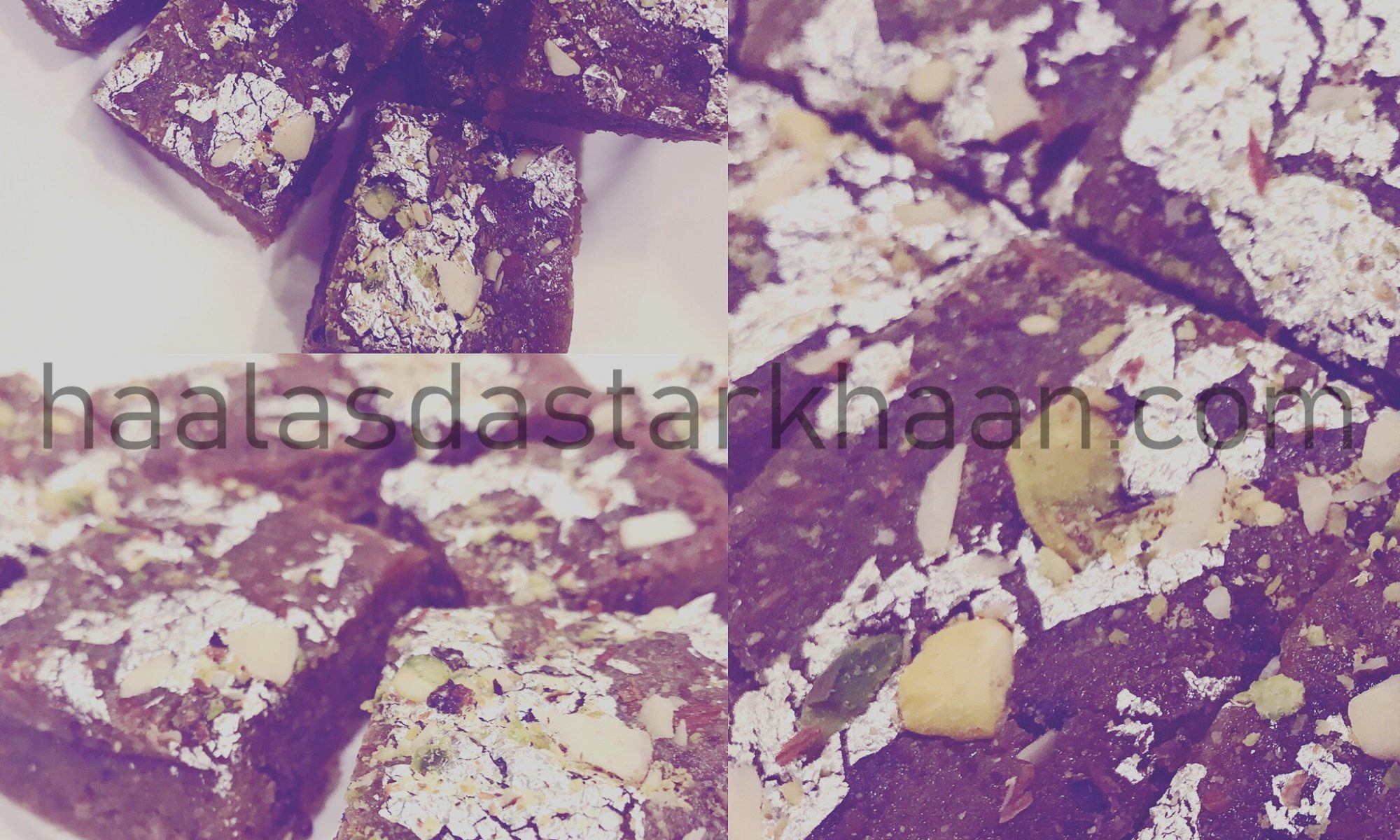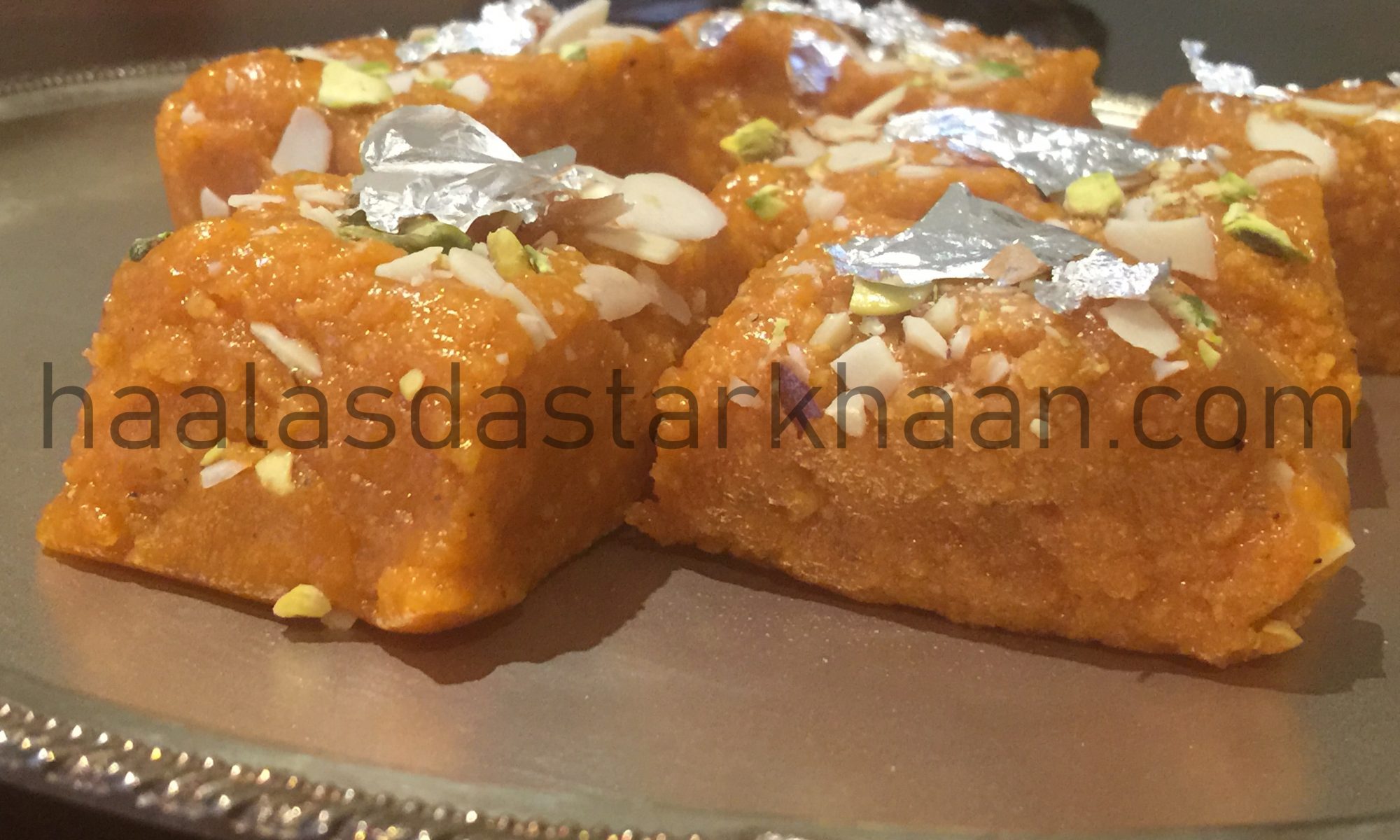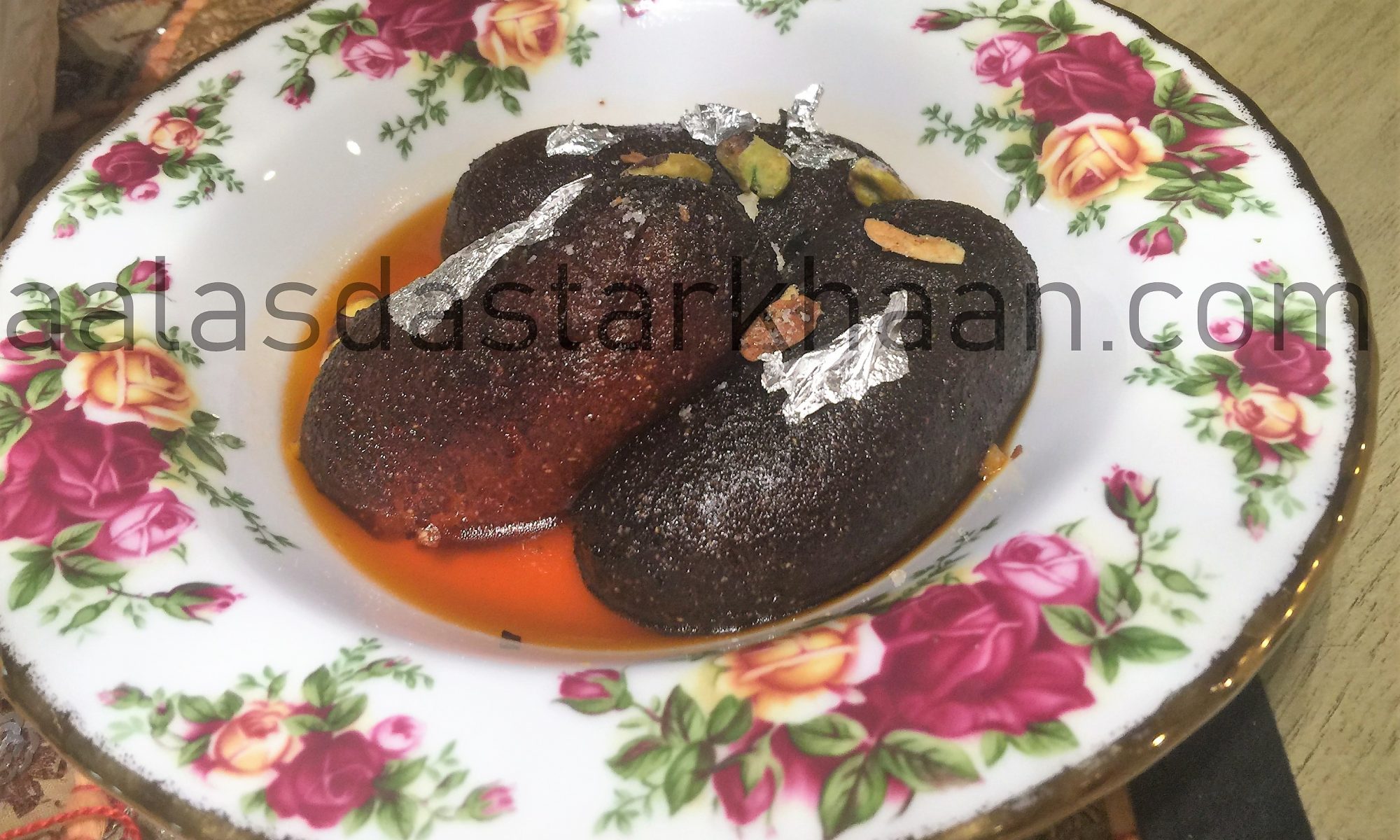Moong daal ki burfi. It’s one of my all time favorites. This dish takes me back to my childhood days. This sweet was an Eid special for us. Every Eid, it was a tradition that went just perfect with Eid Biryani, kheer, kebabs, seviyaan, launji, curries etc. For a long time, I believed it’s an Eid dish. I guess these are a few perks of being raised in a diverse culture and having friends from all religions.
Traditionally, Moong daal Burfi is actually called Moong Daal Chakki in my home town Jodhpur. Its a sweet which is loved by the masses and has a chunky, sweet and filling. It can be made a few days in advance if you want to prepare it ahead of time for a party. It makes an excellent party favors too.
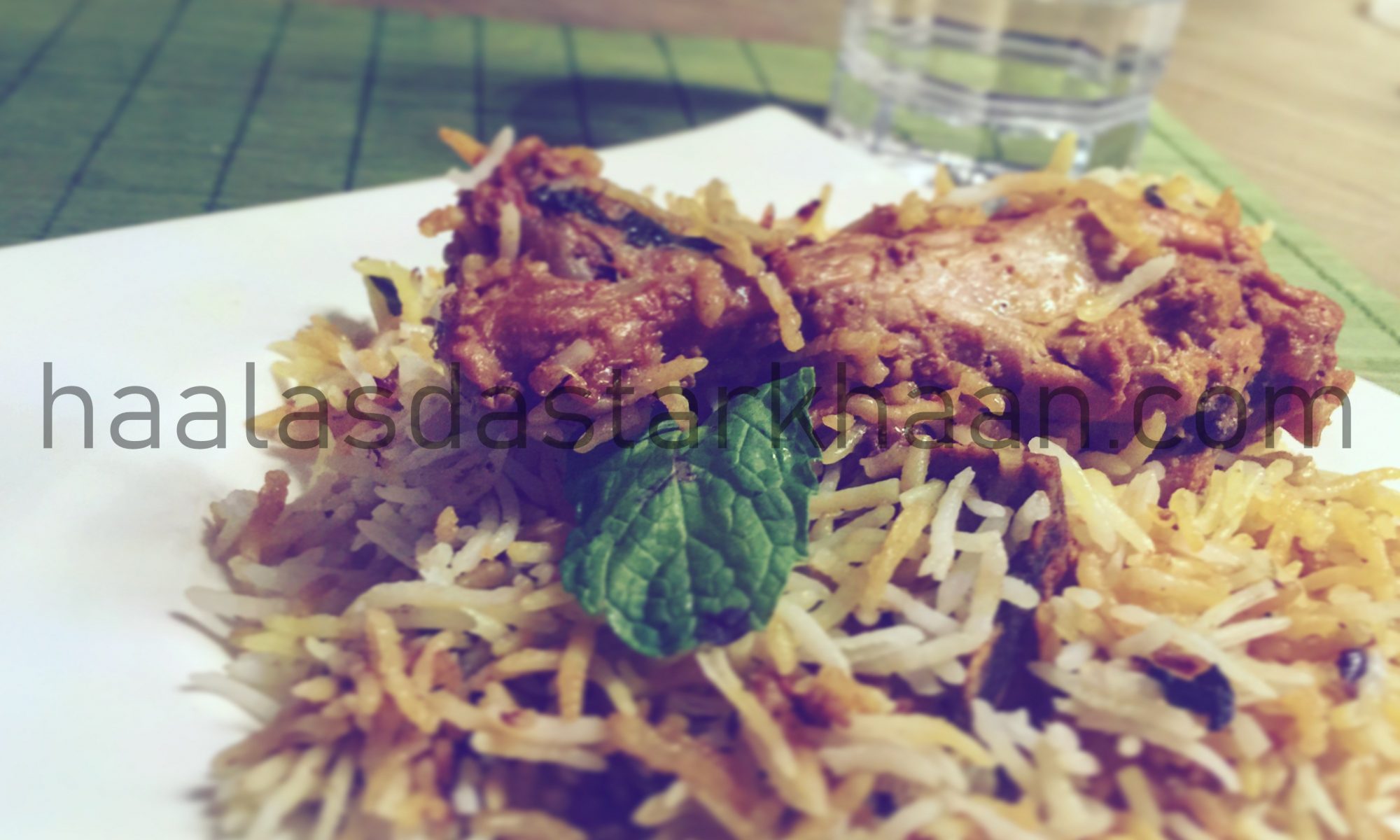
This recipe is from the land of Kerala. Thalassery food has a distinct flavor. Thalassery town of Northern Kerala, that has a blend in Arabian, Persian, Indian and European styles of cooking as a result of its long history as a maritime trading post. Thalassery is very popular for its delicious Biryani. Unlike other biryani dishes, Thalassery Biryani, originally uses jeerakshala/kaima rice instead of the usual long grained Basmati Rice. I used Basmati Rice since I cannot see my Biryani any other way. My Mother in law still prefers the kaima rice over Basmati rice, even for Biryani. Kaima rice has its own exclusive flavor and they have a wonderful fragrance as well, but I just come from a very Mughlia thought and prefer my Rice grain to be beautifully long
The influence of Arabian/Mughal culture is evident, especially in the dishes of the Muslim community of Kerala and Thalassery Biryani happens to be one of those dishes that shows it Mughlia flavors and is still enjoyed by all.
We, personally as a family love the food made in Kerala, vegetarian and Non vegetarian. You will find us taking time out if any of the hotels are celebrating “Kerala food festival week” during our stay in India. The best thing I enjoy about Kerala cuisine is the fact that the flavor of each ingredient comes out distinct in its own way making the dish complete. The way the cuisine has its ingredients listed and the process in which you add the spice changes the flavor of a dish. With Kerala cuisine , they make sure that no one ingredient over powers the flavor of the other ingredient. In fact, they blend in symphony making the dish delicious and exclusive.
Mohanthaal is popularly known as Besan Burfi. I tried searching to find out why it was initially named as Mohanthaal, but couldn’t really find anything authentic to share.
My home town still has a store in the old city that calls it “Mohanthaal” and I prefer that to calling it plain Besan Burfi. Though, I am not a big fan of Ghee, in spite of belonging to the city where most people proudly belong to the blood group of “ghee positive”, but certain dishes have to use ghee to have the authentic taste and this is one of those dishes. So, if you are thinking of substituting your ghee with oil/butter, Please don’t.
If you are health conscious, eat less and control it. Its not good to give up on taste. I always ask people to stick to the original flavor of certain dishes. Its lovely to have fusion dishes once in a while, but make sure your fusions or changes to a dish do not make it lose its original flavor.
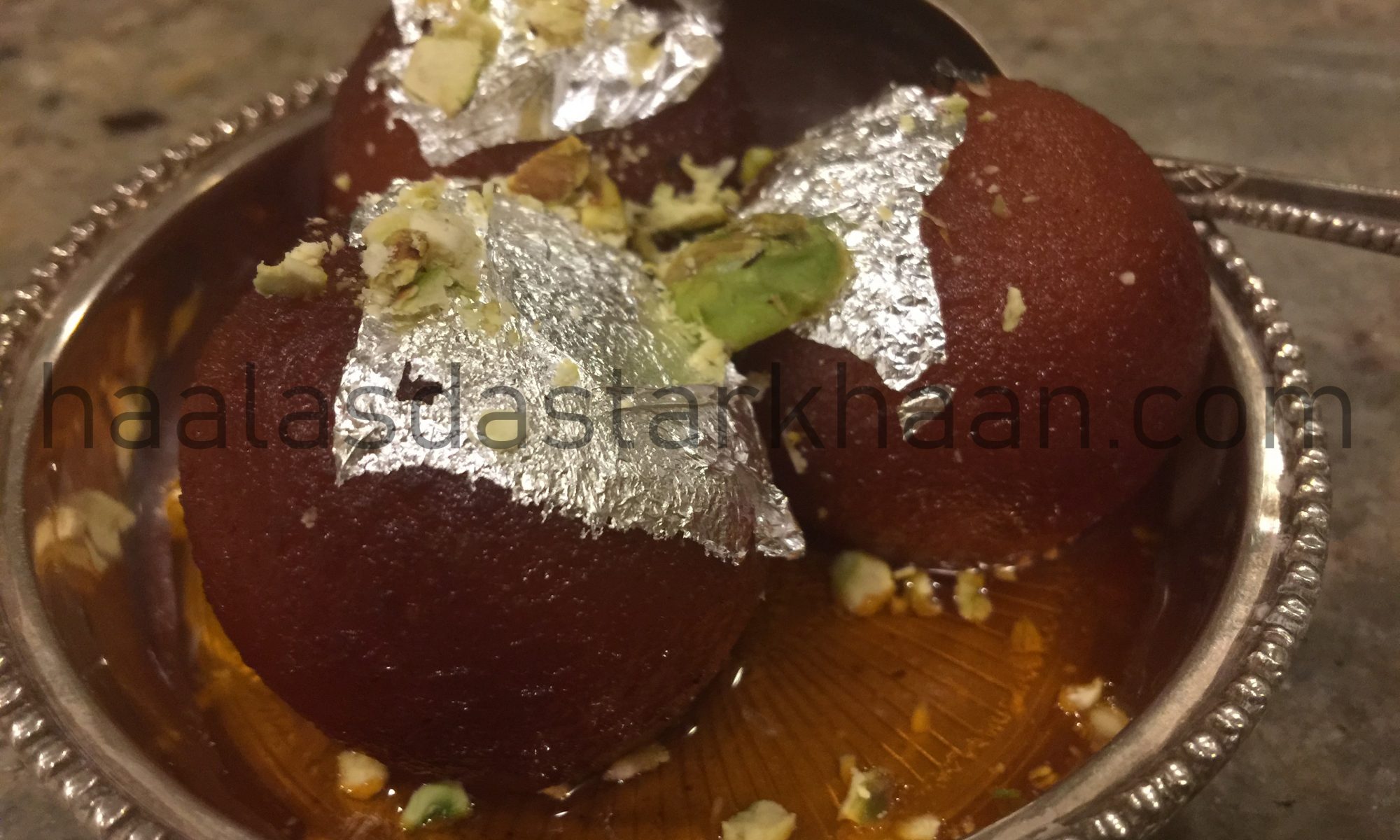
Every time someone mentions these awesome, sweet, sugary balls, people either tend to get them from a sweet store or if they are home made, most times they are made from the popular mix pack that has you add a few easy ingredients from home, like sugar and milk and fry them and you all set to serve them. But, little do you know that you don’t really need that little pack or run to the store. Making Gulab Jamuns at home, with ingredients you will find at home, is pretty easy and not at all time consuming. The only thing you need is a perfect recipe.
Now, if you ever thought Gulab Jamuns is a gift of India to the world, you are wrong. Gulab Jamuns are actually a gift from the Mughals. All these sweet dishes that used Orange Blossom water or Rose water or screw pine water with saffron are all delicacies that came in from the Middle East and were introduced to Indian cuisine during the Mughal Era.
As the history says, the Gulab Jamuns were first prepared in the era of medieval times in India, derived from a sweet fritter recipe that a Central Asian Turkish invader brought to India. One theory also claims that it was accidentally prepared by the Mughal emperor Shah Jahan’s personal chef. All in all, it is a sweet dish inspired by the Middle east.
The word “Gulab” is derived from the Persian words gul, which means flower and āb, means water, referring to the rose water-scented syrup. Jamun is also defined as a fried delicacy in dipped in sugar syrup. A middle eastern dessert Luqmat al-qadi is very similar to gulab jamun, though it uses a different batter.
These outstanding Gulab Jamuns have a remarkable depth of taste and texture achieved very carefully combining few ingredients to form balls. Fry them slowly in ghee or oil, further soak them in syrup. With such detailed recipe, its hard to go wrong.
If you like Gulab Jamuns, you will definitely like these. These are almost the same recipe as Khoya Gulab Jamun with a filling of dry fruits inside. Change the shape to make it look different from regular Gulab Jamuns. I made them oblong, you can always make them bigger and round if that appeals you more.
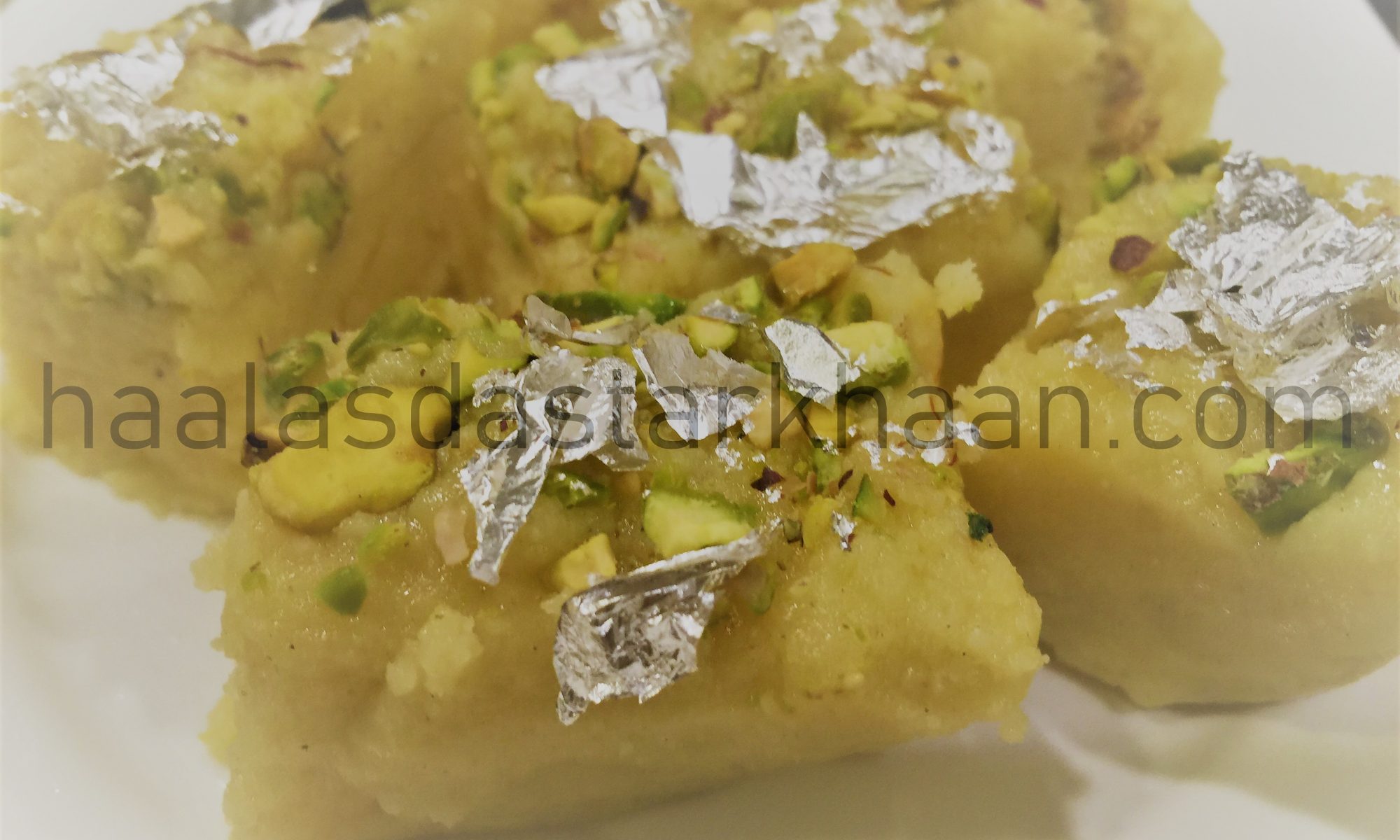
Barfi, borfi or burfi is a dense milk based mithai, originating from India. The name though is a derivative of the Persian word barf, which means snow. I have not come across any sweet in the middle east that tastes close to Burfi, therefore I could not find out the reason behind the name. But, one thing is for sure, that the use of cardamom and saffron does prove the Persian influence in initial creation of this marvelous dish.
You never realize until you leave India that getting decent Khoya Burfi from a sweet shop would ever be a big deal. And trust me, the best of shops have sold us the most crappy burfis ever and don’t forget the high prices.
For quiet some time I have been trying to make my own Khoya burfi but they would for some reason not be perfect. I was not getting the exact measurement for each ingredient to make sure the final product comes out to be perfect.
And, just then I remembered this guy who made the simplest and nicest Khoya Burfi outside my father’s workshop. In fact, his pakoras and his Khoya burfi were very popular and though my father was his regular customer, at times he would just run out and my father has returned empty handed from his store. Oh yes! I also loved his aloo papdi. I think those childhood memories and flavors always linger on your tongue and mind and we mostly run around to get those flavors back and have our children experience and love things the way we did.
This Khoya Burfi recipe is from that store, though the guy who made is no more, nor is my father but the memories are so beautiful that I would cherish them for as long as my heart beats.
Mango Lassi is a popular name in Indian houses during summer, specially the Mango season. I personally have always loved sweet and sour lassi, but those days I never realized that Lassi could have fruit flavors as well.
The maximum innovation I tried during our Ramadan was Rose Lassi, which was basically sweet lassi with Rose syrup, not really an innovation. With time, and thank you to all wonderful exposure that I got, I came across Mango Lassi. As a Mango lover, it was definitely something that I wanted to master.
It’s an easy drink to make and very refreshing, specially during summer evenings. I prefer using real mangoes for lassi than mango puree. I feel the taste is more pure and the natural sugar from Mango gives it a great taste.
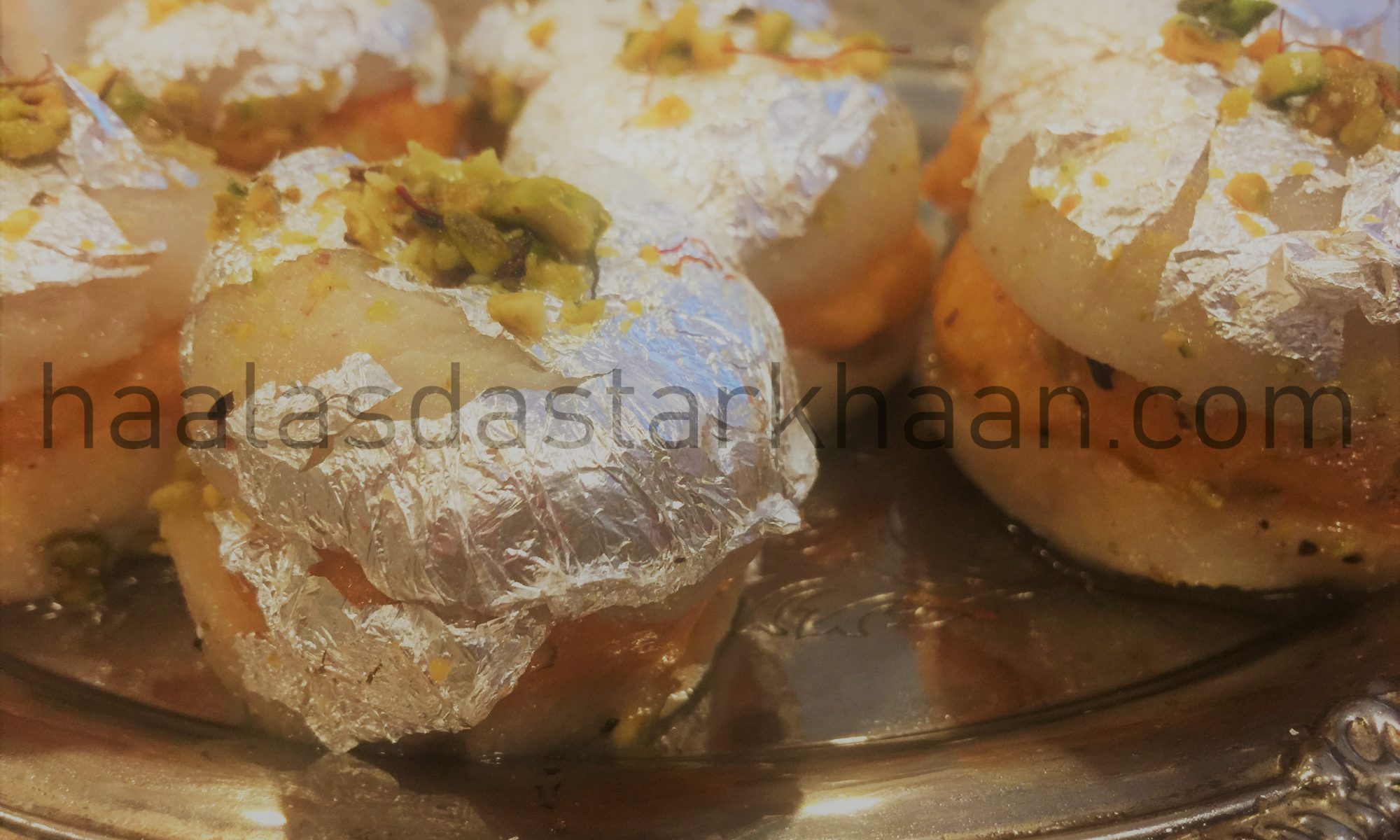
Bengali sweets happen to be one of the best sweets in India. They offer a wide variety from Rasgullas to Mishti Doi and most people who like Indian sweets always love these sweet sugar dipped treats.
Mr. Parveez loves Malai Sandwich and he would always buy them from his favorite Indian sweet shop here. There were few other ones as well and he loved them all. Few years back we moved houses and we went pretty far from the area of our favorite Indian area. So, the visits to the sweet shop weren’t as frequent and Mr. Parveez though deprived never complained and neither did he ever ask me to try.
Actually there is a funny story to him asking too. As a newly married wife, every now and then I would try to make dishes that we have tried at different restaurants. I still don’t know why I did that, probably just wanted to amaze my husband …LOLzzz. But instead of impressing him, he asked me to stop. The problem was that making the dishes we eat at restaurant would be close to what we eat outside, but the charm of enjoying a meal outside would be lost. So, as much as I wanted to try making some of these sweets, I would not attempt and just get the sweets from the sweets store whenever we would be in that area. Few years ago we moved to our new house, and the house is pretty far for us to visit that sweet store as often as we would like to, and the closest Indian market does not sell sweets of the same quality unless we buy frozen and we all know frozen loses the taste.
And that’s how I decided to make my own. Initially when I started making Rasgullas because that makes a base for all the bengali sweets, or most of them. The Rasgullas need a little tactic that makes sure they are spongy and can absorb the sweetness from the sugar syrup. That’s the first thing you need to master and as easy as the recipe looks and seems, they aren’t that easy. It took me around 5 trials to master them.
The best recipe I got for Rasgullas was from a friend’s mom. The way she explained the procedure made them super easy to make and left me amazed.
For Malai Chumchum, make rasgullas and once done have to be cut into half and add khoya mix . The middle part is khoya mixed with sugar and a little spice to enhance flavors. You can always a little bit of food color to make the dish look nicer. Garnish with silver leaf and crushed nuts.
You can always make them 4-5 days in advance. Refrigerate and serve chilled.
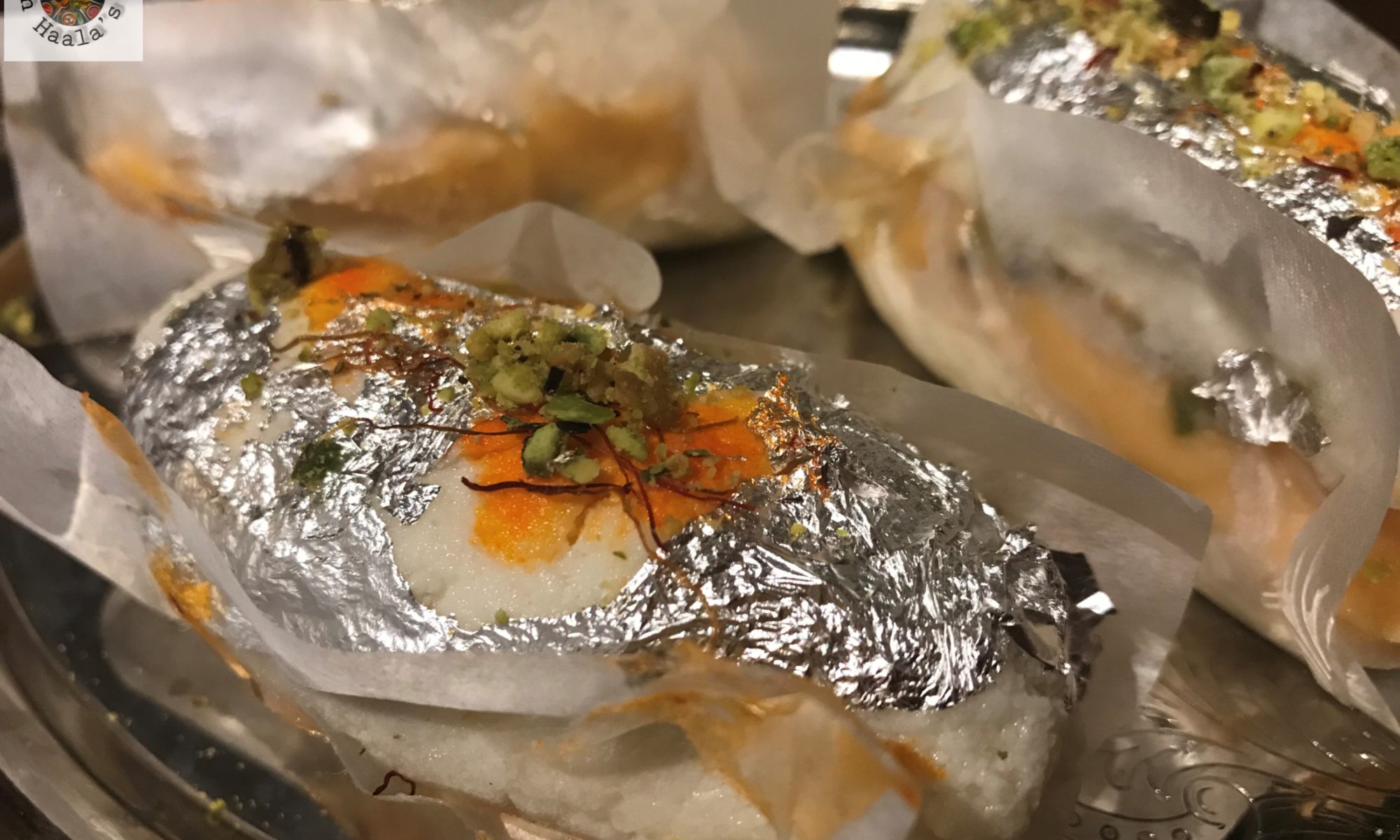
Bengali sweets happen to be one of the best sweets in India. They offer a wide variety from Rasgullas to Mishti Doi and most people who like Indian sweets always love these sweet sugar dipped treats.
Malai Chum Chum is a very popular Bengali sweet made with Paneer or homemade Cottage Cheese. It is a delicious Indian dessert that cannot be resisted since they are amazingly delicious to look at and delectable. These chum chums are soaked in sugar syrup and in between are filled with rich and creamy Khoya filling.
Mr. Parveez loves Malai Chumchum and he would always buy them from his favorite Indian sweet shop here. There were few other ones as well and he loved them all. Few years back we moved houses and we went pretty far from the area of our favorite Indian area. So, the visits to the sweet shop weren’t as frequent and Mr. Parveez though deprived never complained and neither did he ever ask me to try.
Actually there is a funny story to him asking too. As a newly married wife, every now and then I would try to make dishes that we have tried at different restaurants. I still don’t know why I did that, probably just wanted to amaze my husband …LOLzzz. But instead of impressing him, he asked me to stop. The problem was that making the dishes we eat at restaurant would be close to what we eat outside, but the charm of enjoying a meal outside would be lost. So, as much as I wanted to try making some of these sweets, I would not attempt and just get the sweets from the sweets store whenever we would be in that area. Few years ago we moved to our new house, and the house is pretty far for us to visit that sweet store as often as we would like to, and the closest Indian market does not sell sweets of the same quality unless we buy frozen and we all know frozen loses the taste.
And that’s how I decided to make my own. Initially when I started making Rasgullas because that makes a base for all the bengali sweets, or most of them. The Rasgullas need a little tactic that makes sure they are spongy and can absorb the sweetness from the sugar syrup. That’s the first thing you need to master and as easy as the recipe looks and seems, they aren’t that easy. It took me around 5 trials to master them.
For Malai Chumchum, make rasgullas and once done have to be cut into half and add khoya mix . The middle part is khoya mixed with sugar and a little spice to enhance flavors. You can always a little bit of food color to make the dish look nicer. Garnish with silver leaf and crushed nuts.
You can always make them 4-5 days in advance. Refrigerate and serve chilled.

Jodhpur, my beautiful hometown and land of sweetness and colorful people. One of the most popular sweet is Maave ki Kachori. The crunchy outer crust and slightly sweet inside dipped in the sugar syrup.
For Mr. Parveez it was love at first sight or love at first bite. He enjoyed it so much that every Jodhpur visit, Maave Ki Kachori was a must and if we had any one coming over, we would ask them to get it for us, which I would fry again and pour some warm sugar syrup on it ans serve. As much as we would appreciate the pain people would go through to bring/send these awesome sweets to us, but the only problem was that staying without refrigeration for so long would spoil the taste a little and we wouldn’t be able to enjoy more that 25%. So, with time, we had to give up on that.
The best Maava Kachori according the polls is made by Raawat sweet store and I once happened to have a few guests over , out of which one has been to Jodhpur and has tried maava Kachori from that sweet store. I was truly honored when the guest told me that mine would win if there was a competition. Its always great to receive compliments from my boys and as much as I know that they are honest when it comes to food, I still believe they appreciate my efforts at times and never complain if the dish hasn’t come out great.
And then finally one day I decided to try my own. Before I write the whole recipe, let me tell you this…I have never eaten or tried Maave Ki Kachori. I am just few of those “weirdos” who do not enjoy sweets made with sugar syrup and therefore when the thought came to my mind, it was actually an arrow in the dark. What I knew was that the filling has Khoya and nuts and slight taste of some spices. The biggest blessing is to have a husband who has amazing taste buds and therefore, it was easy to have him try the filling before I finalize it.
The first attempt had too much spice and it was hard to taste the khoya and sweetness. The second try had too little spice. The third one was perfect since I understood how and what to do. The khoya needs to have a little bit of clove but suggest that they shouldn’t be powdered and they should be mixed as is in the pan while cooking khoya and should be taken out leaving the flavor. Besides, cloves, its cardamom powder, cinnamon powder and Nutmeg powder.
When you start cooking the Khoya would melt in the pan and that’s good since it makes it easier to blend it with flavor of spices, and when it cools down, it automatically solidifies again. Sugar should be mixed only once its taken off the pan.

